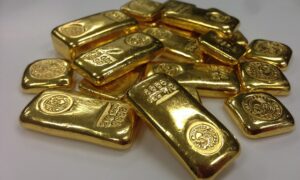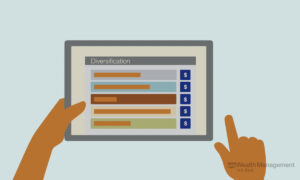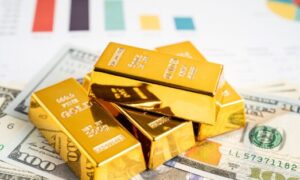Investing is all about balancing risk and reward. Diversification spreading investments across various asset classes is a tried-and-true strategy for mitigating risk and achieving long-term financial goals. One often-overlooked asset class in this equation is precious metals. Gold, silver, platinum, and palladium offer unique benefits that can enhance portfolio stability and growth potential. Here’s an in-depth look at how precious metals, including those offered by money metals, play a role in a diversified portfolio.
Why Diversify?
Diversification helps protect your investments from market volatility. While no investment is entirely risk-free, spreading assets across different sectors and asset classes reduces the impact of a downturn in any one area. A well-diversified portfolio typically includes stocks, bonds, real estate, and cash equivalents. Adding precious metals provides further insulation against economic uncertainties.
Unique Characteristics of Precious Metals
- Store of Value: Precious metals, particularly gold, have been valued for thousands of years. Unlike fiat currencies, they cannot be printed or devalued by governments, making them a reliable store of value. During times of currency depreciation or hyperinflation, precious metals tend to retain or even increase their purchasing power.
- Hedge Against Inflation: Inflation erodes the purchasing power of money. Precious metals have historically performed well during periods of high inflation, as their value typically rises when the cost-of-living increases. Gold, in particular, is seen as an effective hedge against inflation.
- Low Correlation with Other Assets: One of the primary reasons to include precious metals in a portfolio is their low correlation with traditional asset classes like stocks and bonds. When equity markets are volatile or declining, gold and silver often move in the opposite direction, providing a stabilizing effect.
- Liquidity: Precious metals are highly liquid assets. Gold and silver, for instance, are universally recognized and can be quickly converted into cash almost anywhere in the world.
- Tangible Asset: Unlike digital or paper assets, precious metals are physical commodities you can hold. This tangibility gives investors a sense of security, especially during times of systemic financial instability.
How Precious Metals Fit into a Portfolio
- Strategic Allocation
The allocation to precious metals in a diversified portfolio typically ranges between 5% and 15%, depending on the investor’s risk tolerance and market outlook. A conservative investor may prefer a lower allocation, while someone more concerned about economic instability might opt for a higher percentage.
- Physical vs. Paper Assets
Investors can gain exposure to precious metals in several ways:
- Physical Bullion: Bars and coins offer direct ownership but require secure storage.
- ETFs: Exchange-traded funds provide exposure to metal prices without the need for physical storage.
- Mining Stocks: Investing in companies that produce precious metals can offer higher returns but comes with added risk.
- Futures and Options: These are advanced instruments suitable for experienced investors looking to speculate on price movements.
- Digital Gold: Emerging platforms now allow investors to purchase fractional ownership of gold stored securely, offering a modern way to invest in precious metals.
- Economic Shield
Precious metals shine during economic downturns. In 2008, for example, gold prices surged as the stock market plummeted. Including metals in a portfolio acts as a safeguard during recessions, geopolitical tensions, or financial crises.
- Portfolio Rebalancing
Precious metals can serve as a dynamic tool for rebalancing your portfolio. For instance, when equities perform exceptionally well, the relative weight of precious metals may decline, signalling an opportunity to rebalance and maintain strategic allocation targets.
Risks and Considerations
While precious metals offer many advantages, they are not without risks:
- Price Volatility: Precious metals can experience significant price swings, particularly over short time horizons.
- Storage and Insurance Costs: Physical bullion requires secure storage and may incur additional expenses for insurance.
- Lack of Yield: Unlike stocks or bonds, precious metals do not generate income, such as dividends or interest.
- Market Speculation: Precious metals markets can sometimes be influenced by speculative trading, leading to short-term volatility.
The Future of Precious Metals
Several trends point to a bright future for precious metals:
- Technological Demand: Metals like silver and platinum are critical in industries such as electronics, renewable energy, and automotive sectors (e.g., catalytic converters in vehicles).
- Central Bank Purchases: Many central banks are increasing their gold reserves, signalling long-term confidence in the asset. This trend underscores gold’s role as a reliable store of value.
- Sustainability and Green Energy: The push for sustainability is driving demand for silver in solar panels and platinum in hydrogen fuel cells, creating new opportunities for growth.
- Geopolitical Uncertainty: In a world of political and economic uncertainty, the appeal of precious metals as a safe haven remains strong. Events such as trade wars, regional conflicts, and global financial crises often bolster their value.
Incorporating precious metals into a diversified portfolio can provide stability, protection against inflation, and a hedge against economic turmoil. While they are not a one-size-fits-all solution, their unique characteristics make them a valuable component of any investment strategy. By strategically allocating a portion of your portfolio to gold, silver, or other metals, you can enhance resilience and position yourself for long-term success.
Investors should carefully consider their financial goals, risk tolerance, and market outlook when determining how much to allocate to precious metals. Consulting with a financial advisor can provide tailored guidance to maximize the benefits of this timeless asset class.




































